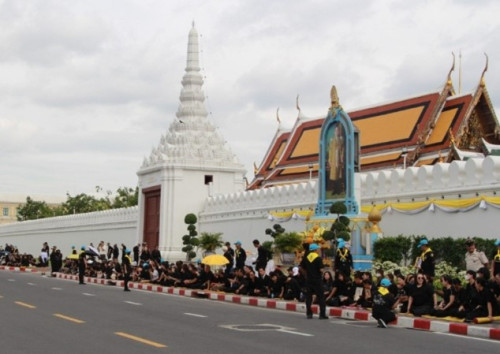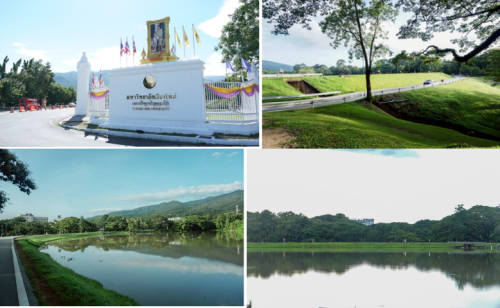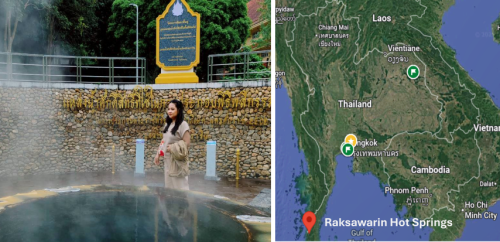blog post
ช่วงเวลาแห่งความอาลัยของคนไทย “เคารพและไว้อาลัยพระพันปีหลวง”
ประเทศไทยได้สูญเสียสมเด็จพระนางเจ้าสิริกิติ์ พระบรมราชินีนาถ พระบรมราชชนนีพันปีหลวง
เมื่อวันที่ 24 ตุลาคม พ.ศ. 2568 ด้วยพระอาการสงบ สิริพระชนมพรรษา 93 พรรษา ข่าวนี้สร้างความเศร้าโศกอย่างยิ่งแก่ประชาชนคนไทยทุกหมู่เหล่า
เพื่อถวายความอาลัยและไว้อาลัยต่อการเสด็จสวรรคต สำนักพระราชวังได้กำหนดให้มีการไว้ทุกข์ ดังนี้
- ข้าราชการและเจ้าหน้าที่รัฐ: ไว้ทุกข์เป็นเวลา 1 ปี
- ประชาชนทั่วไป: ขอความร่วมมือ งดแต่งกายสีฉูดฉาดเป็นเวลา 90 วัน หรือพิจารณาตามความเหมาะสม
- การลดธงครึ่งเสา: ตั้งแต่วันที่ 25 ตุลาคม พ.ศ. 2568 เป็นต้นไป เป็นเวลา 30 วัน
- การถวายสักการะพระบรมศพ: ณ พระที่นั่งดุสิตมหาปราสาท ในพระบรมมหาราชวัง ตั้งแต่วันที่ 27 ตุลาคม พ.ศ. 2568 เป็นต้นไป
การสูญเสียครั้งนี้เป็นความเศร้าโศกร่วมกันของคนไทยทุกคน และถือเป็นช่วงเวลาที่ประชาชนและองค์กรต่าง ๆ สามารถแสดงความเคารพและไว้อาลัยด้วยความเหมาะสม
Photos were brought from the Bureau of the Royal Household and THAIRATH.
(Bee)
อ่างแก้ว มช. รู้สึกดีมาก!
อ่างแก้ว คือ อ่างเก็บน้ำขนาด 400,000 ลบ.ม. อยู่ในมหาวิทยาลัยเชียงใหม่ เริ่มสร้างขึ้นใน พ.ศ.2505 สำหรับใช้เพื่อการประปาภายในมหาวิทยาลัยเชียงใหม่ ซึ่งจะเปิดมหาวิทยาลัยในปี 2507
เป็นสถานที่ยอดนิยมสำหรับนักศึกษา มช. เพื่อพักผ่อน ออกกำลังกาย และถ่ายรูป บรรยากาศบริเวณอ่างแก้วยังสามารถเห็นดอยสุเทพได้อีกด้วย เป็นฉากหลังสำหรับถ่ายรูปได้ดีมาก ถือเป็นจุดชมวิวที่สวยงามอีกจุดหนึ่งที่สามารถนั่งพักผ่อนและถ่ายรูปยามเย็นที่ไม่ควรพลาด เมื่อมาเยือนเชียงใหม่อย่าพลาดการเช็คอิน ปัจจุบันเป็นพักผ่อนถ่ายรูป ชิลล์ๆของทั้งคนไทยและชาวต่างประเทศ.
(Fern)
Ang Kaew (CMU), feels so good!
Ang Kaew is a 400,000 cubic meter reservoir located in Chiang Mai University (CMU). It was built in 1962 for the waterworks within Chiang Mai University, which opened in 1964. It is a popular place for CMU students to relax, exercise, and take pictures.
The atmosphere around Ang Kaew can also see Doi Suthep. It is a great backdrop for pictures. It is another beautiful viewpoint where you can sit and relax and take pictures in the evening that you must not miss.
When you visit Chiang Mai, don't miss checking in.
Currently, it is a relaxing place for taking pictures and chilling out for both Thais and foreigners.
CMU [https://www.cmu.ac.th/th/cmu/history]
(Fern)
Rejuvenate Your Health at Raksawarin Hot Springs, Ranong Province
Benefits of Soaking in Hot Springs
- The natural mineral-rich water helps nourish and soften the skin.
- The warm temperature stimulates blood circulation.
- It reduces fatigue and helps the body relax, making it perfect for genuine rest and rejuvenation.
In addition to soaking in the hot springs, visitors can also enjoy foot massages for relaxation
- Foot massage helps relieve tension accumulated from travel.
- It stimulates blood circulation and enhances the benefits of relaxation.
- Combined with soaking in the hot springs, it leaves you feeling lighter and refreshed.
Visiting Raksawarin Hot Springs is not just about enjoying nature; it’s about recharging both body and mind. It’s perfect for those looking for a peaceful getaway and for travelers who love wellness tourism.
(Bee)
เติมพลังสุขภาพที่น้ำพุร้อนรักษะวาริน จังหวัดระนอง
ที่มา: google map
เติมพลังสุขภาพที่น้ำพุร้อนรักษะวาริน จังหวัดระนอง
ถ้าพูดถึงจังหวัดระนอง หลายคนคงนึกถึงฝนเยอะและธรรมชาติอุดมสมบูรณ์ แต่ที่นี่ยังมีอีกหนึ่งไฮไลต์สำหรับสายสุขภาพ นั่นก็คือ น้ำพุร้อนรักษะวาริน
ประโยชน์ของการแช่น้ำร้อน
- น้ำแร่ธรรมชาติของที่นี่อุดมไปด้วยแร่ธาตุ ช่วยบำรุงผิวให้เนียนนุ่ม
- ความร้อนอุ่น ๆ จากน้ำช่วยกระตุ้นการไหลเวียนโลหิต
- ลดความเมื่อยล้า และช่วยให้ร่างกายผ่อนคลายเหมาะกับการพักผ่อนอย่างแท้จริง
นอกจากการแช่น้ำร้อนแล้ว นักท่องเที่ยวยังสามารถเลือกบริการ นวดเท้าเพื่อผ่อนคลาย
- การนวดเท้าช่วยคลายความตึงเครียดที่สะสมจากการเดินทาง
- กระตุ้นระบบไหลเวียนโลหิต และเสริมประสิทธิภาพการพักผ่อน
- เมื่อผสานกับการแช่น้ำร้อน จะยิ่งรู้สึกเบาสบายและสดชื่นขึ้นมาก
การมาเยือนน้ำพุร้อนรักษะวารินจึงไม่ใช่เพียงการเที่ยวชมธรรมชาติ แต่ยังเป็นการเติมพลังให้ร่างกายและจิตใจ เหมาะทั้งสำหรับคนที่อยากพักผ่อนแบบสบาย ๆ และผู้ที่ชื่นชอบการท่องเที่ยวเชิงสุขภาพอย่างแท้จริง





